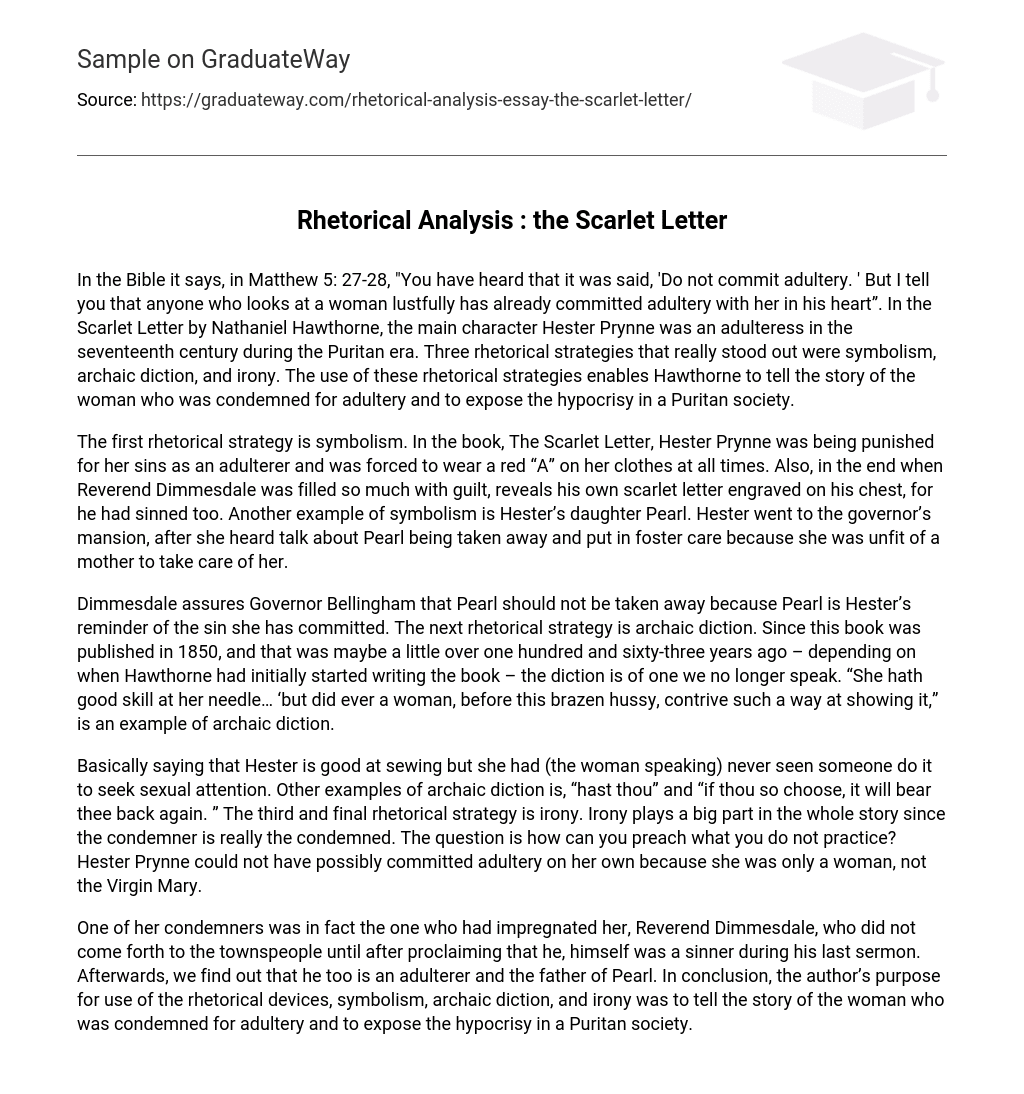In the Bible it says, in Matthew 5: 27-28, “You have heard that it was said, ‘Do not commit adultery. ‘ But I tell you that anyone who looks at a woman lustfully has already committed adultery with her in his heart”. In the Scarlet Letter by Nathaniel Hawthorne, the main character Hester Prynne was an adulteress in the seventeenth century during the Puritan era. Three rhetorical strategies that really stood out were symbolism, archaic diction, and irony. The use of these rhetorical strategies enables Hawthorne to tell the story of the woman who was condemned for adultery and to expose the hypocrisy in a Puritan society.
The first rhetorical strategy is symbolism. In the book, The Scarlet Letter, Hester Prynne was being punished for her sins as an adulterer and was forced to wear a red “A” on her clothes at all times. Also, in the end when Reverend Dimmesdale was filled so much with guilt, reveals his own scarlet letter engraved on his chest, for he had sinned too. Another example of symbolism is Hester’s daughter Pearl. Hester went to the governor’s mansion, after she heard talk about Pearl being taken away and put in foster care because she was unfit of a mother to take care of her.
Dimmesdale assures Governor Bellingham that Pearl should not be taken away because Pearl is Hester’s reminder of the sin she has committed. The next rhetorical strategy is archaic diction. Since this book was published in 1850, and that was maybe a little over one hundred and sixty-three years ago – depending on when Hawthorne had initially started writing the book – the diction is of one we no longer speak. “She hath good skill at her needle… ‘but did ever a woman, before this brazen hussy, contrive such a way at showing it,” is an example of archaic diction.
Basically saying that Hester is good at sewing but she had (the woman speaking) never seen someone do it to seek sexual attention. Other examples of archaic diction is, “hast thou” and “if thou so choose, it will bear thee back again. ” The third and final rhetorical strategy is irony. Irony plays a big part in the whole story since the condemner is really the condemned. The question is how can you preach what you do not practice? Hester Prynne could not have possibly committed adultery on her own because she was only a woman, not the Virgin Mary.
One of her condemners was in fact the one who had impregnated her, Reverend Dimmesdale, who did not come forth to the townspeople until after proclaiming that he, himself was a sinner during his last sermon. Afterwards, we find out that he too is an adulterer and the father of Pearl. In conclusion, the author’s purpose for use of the rhetorical devices, symbolism, archaic diction, and irony was to tell the story of the woman who was condemned for adultery and to expose the hypocrisy in a Puritan society.





